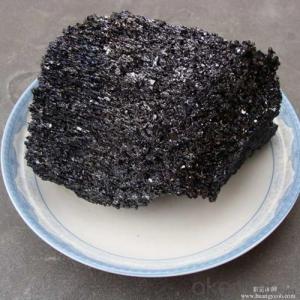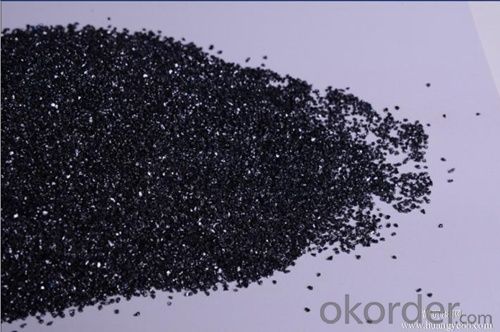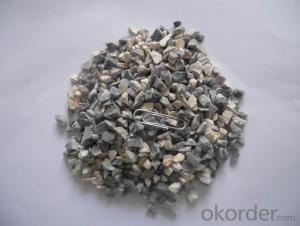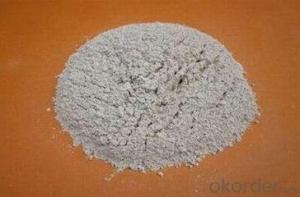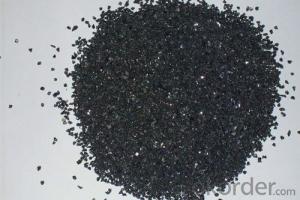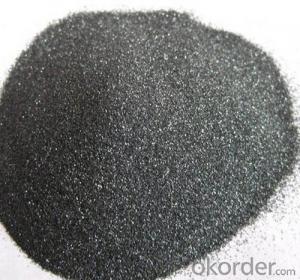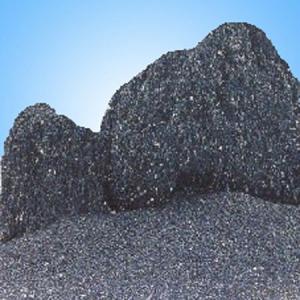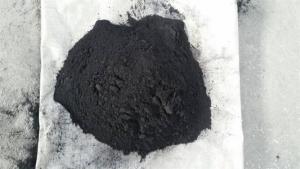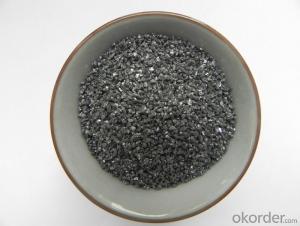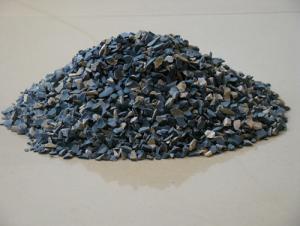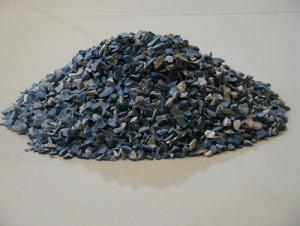Raw Materials for Refractory - Silicon Carbide/Black Silicon Carbide with High Quality
- Loading Port:
- China main port
- Payment Terms:
- TT OR LC
- Min Order Qty:
- 25 m.t.
- Supply Capability:
- 2000 m.t./month
OKorder Service Pledge
OKorder Financial Service
You Might Also Like
Product Description
1. Description
Black silicon carbide is produced at high temperature in an electric resistance type furnace with
quarts sand and petroleum coke as its main raw materials. Its hardness is between fused alumina
and synthetic diamond. Mechanical intensity of it is higher than fused alumina. It is sharp and
has electrical and heat conductivity in some degree.
2. Partical Size
Lumps: 0-20mm, 0-50mm.
Grains: 0-1mm, 1-3mm, 3-5mm, 5-8mm, 0-5mm, 0-10mm, 1-10mm, etc.
7/14, 14/30, 36/70, etc.
-100mesh, -200mesh, -325mesh, etc.
Grits: F12-90, F100-240.
Micropowder : F 280-600.
*Note: the size can be based on customer’s requirement.
3. Packing
In 1mt big bag. Or 25kg bags be packed into 1mt big bag. Also can be based on customer’s
requirement.
4. Specification
SIC98.5%, SIC98%, SIC97%, SIC95%, SIC90%, SIC88%, SIC85%, SIC80%, SIC75%, SIC70%, SIC65%, SIC55%, SIC50%
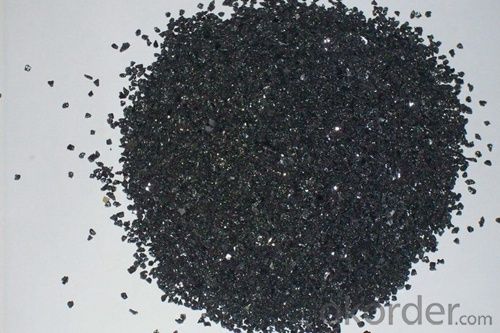
Our Service:
1. Your inquiry related to our products or prices will be replied in 24hours.
2. Manufacturer with large capacity, ensure the fast production cycle after confirmed the order.
3. Our professional technicians will answer your entire enquiry in patient.
4. To meet the refractory solutions, we can serve as your instructions.
5. Protection of sales area and private information for our entire customer.
If you’ve kind enquiries, please don’t hesitate to let us know. ^_^
- Q: Why can aluminium hydroxide not be used to make refractory material?
- Hope my answer is helpful to you. It decomposes and produces aluminium oxide and water after heating, chemical equation for the reaction is: 2Al(OH)3=△=Al2O3+3H2O. Aluminium hydroxide can't be directly used to make refractory material because aluminium hydroxide is not stable.
- Q: Who knows about roof fireproofing materials?
- Roof thermal insulation materials are various which generally can be divided into two categories, namely inorganic and organic materials: Inorganic materials are expanded perlite, aerated concrete, rock wool, glass wool, etc. Organic materials are styrofoam, polyurethane?foaming?plastic and so on. A. common roof thermal insulation materials 1. the expanding polystyrene board (EPS) has good thermal insulation performance, and cheap price but poor intensity with heat conductivity coefficient of 0.038-0.041. 2. extruded polystyrene board (XPS) has better thermal insulation performance and high intensity but an expensive price with heat conductivity coefficient of 0.028-0.03. It is moisture resistant but needs treatments on surface in construction. 3. rock wool board, with heat conductivity coefficient of 0.041-0.045, is fireproofing, fire?retardant. It has a good hygroscopicity performance but is poor in thermal insulation. 4. gelatine powder polyphenyl granule heat insulating slurry, with heat conductivity coefficient of 0.057- 0.06, has a good flame resistance performance, but the results of recycling and thermal insulation are unsatisfactory. It has high construction requirements. 5. polyurethane foaming material, with heat conductivity coefficient of 0.025-0.028, has good waterproofness and thermal insulation performance, as well as high intensity, but it is expensive. 6. perlite and other slurry, with heat conductivity coefficient of 0.07-0.09, have good flameproofness and water-absorbing ability but are poor in thermal insulation and thermostability.
- Q: Who knows what kind of material the fire-proof plate use, and is it good?
- Personally speaking, fireproof clapboard is very good. It is also known as fire-proof plate or fire retardant board. Made by the pressing of a variety of incombustible?materials after scientific deployment, it is good in fire retardation and can be fire resistant for over 3 hours. It is also non-toxic and non-detonating with high mechanical strength, water and oil resistance, and good chemical corrosion resistance.
- Q: What are fireproofing materials?
- Plants often use the fireproof sealing material with steel structures without much modification. All the panels that meet the first-order fire protection requirements can be fireproofing materials. Like gypsum boards, aluminum sheets and so on. . Coatings are usually those with fine powder, high density and good sealing. Hardeners mainly depends on specific requirements. .
- Q: Which schools are the best schools in the world for learning knowledge about refractories?
- Wish it helps you out.
- Q: What is high alumina refractory?
- High alumina refractory: High alumina refractory products, with high refractoriness, compressive strength and refractoriness under load, it is used for masonry of a variety of large-scale blast furnaces such as steel furnace, air heating furnace and electric furnace, and for high-temperature parts of thermal equipment like rotary?kilns.
- Q: What kind of material is refractory bauxite?
- Bauxite (aluminous soil; bauxite), also known as alumina or bauxite ore whose main component is alumina oxde, is a hydrated alumina containing impurities. It is an earthy mineral. It is white or gray, and as it contains iron, it is also brownish yellow or light red. Density of 2.4-2.5g / cm3, hardness 1-3, opaque and crispy. It is extremely difficult to melt.
- Q: Can polystyrene foam color steel plate be used as decorative fireproofing material ?
- No, only non-combustible product can prevent fire. Most polystyrene foam boards are flammable which cannot prevent fire. Polyphenyl can only retard flame, highest fire?retardant fire?rating being B1 level. Under the same conditions, fireproof performance of polystyrene foam board will be better because most extruded sheets are made by recycling materials and contain much more impurities which will affect flame resisting property. The second reason is that high temperature in extruded sheet manufacturing technique will decompose part of flame retardants. For B1 level extruded sheet, it is difficult to reach 30 burning oxygen index, while for B2 level, it is hard to reach 32. So polyphenyl board is safer.
- Q: Who knows the fire endurance of B-level fireproof doors and windows?
- According to the fire endurance, fireproof doors can be divided into A-grade, B-grade and C-grade, whose fire endurance should not be less 1.2h, 0.9h and 0.6h respectively. Fire endurance of fireproof windows: A-grade fireproof windows are not less than 1.5h and B-grade fireproof windows are not less than 1h. The door leaves of A-grade and B-grade fireproof windows should be steel materials, and their glass should be composite fireproof glass whose thickness is no less than 26mm. Monolithic fireproof glass window is not B-grade fireproof window, nor A-grade fireproof glass window. It si called non-insulated fireproof window.
- Q: Which refractory is better for building 1500 degree kiln ?
- High alumina brick or 99 alumina hollow ball brick is OK, which can withstand a temperature of 1600 ℃.
Send your message to us
Raw Materials for Refractory - Silicon Carbide/Black Silicon Carbide with High Quality
- Loading Port:
- China main port
- Payment Terms:
- TT OR LC
- Min Order Qty:
- 25 m.t.
- Supply Capability:
- 2000 m.t./month
OKorder Service Pledge
OKorder Financial Service
Similar products
Hot products
Hot Searches
Related keywords

